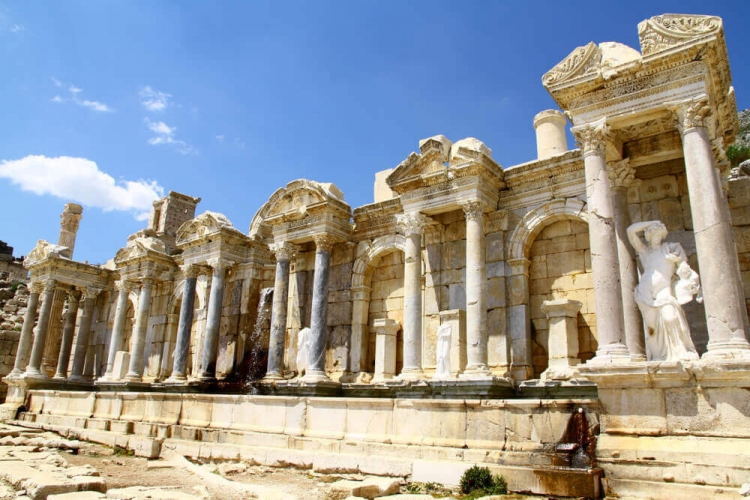
The City of Lakes, Burdur
Burdur has ruins of many civilizations, revealing a real combination of different aesthetic flavors.
Burdur preserves excellent examples of Ottoman regional architecture, notably the Taşoda (now the Ethnographic Museum), Kocaoda (also known as Çelikbaş) and Mısırlılar konaks or 17th century mansions. Both the interior and the exterior show much of the Ottoman aesthetic. The Burdur Archaeological Museum is home to some very important artifacts from around the region.
The city of Burdur is known throughout Turkey for its beautiful lakes, but also for its carpets and kilims.
Burdur Lake, with beautiful beaches for swimming, is an excellent location for water sports. A climb to the top of Susamlık Hill gives you a panoramic view of the city and the lake. The İnsuyu Cave, 10 km south of the road to Antalya, is 597 m long with nine different pools and chambers filled with stalactites and stalagmites.
Kremna (Çamlık) was an important Pisidian city and today contains ruins from the Roman and Byzantine era; it is 60 km from Burdur.
Built in the 13th century by Seljuk ruler Giyasettin Keykubat, the İncirhan Caravanserai is located 7 km west of Bucak in İncirdere (Dereköy).
In Gölhisar (Cibyra), a hundred kilometers southwest of Burdur, you can find ruins of an important ancient North Lycian city from Roman times; there is a stadium, lower and upper agora, theater, necropolis and large aqueducts.
Barutlusu (spring water) Tefenni: Barutlusu is located 5 km west of the city center of Tefenni, Barutlusu It helps the kidney stones to fall out, Affects the dissolving of the stones in the cave, It contributes to the relief of urinary tract diseases, It helps diabetics in relieving stomach problems. Melting minerals are found in the water, not a harmful substance for human health.
Enclosed in the mountains of the region and 1193 m above sea level is the beautiful Lake Salda, an ideal place to relax and cool off on one of the sandy beaches or at the lakeside cafes, hotels and restaurants.
Also in the region is Hacılar Höyük (hill) with ceramics from 5400 to 8500 BC - the site was excavated in 1950. The ancient site of Sagalassos is located 33 km east of Burdur and 7 km south of the city of Ağlasun. As the Pisidian capital, it has Roman-era ruins, including a memorial gate, a colonnade, lower and upper agoras, a temple, and a beautiful theater.
Milyos (Milias) Old town; The city of Hellenistic and Roman periods, Milias, lies within the boundaries of Kocaaliler. 42 km from Burdur. 5 km from the municipality of Kocaaliler (Melli) in the southeast. In the historic city, most homes and structures were built by cutting the rocks in half. The theater, which sits partly on a small rock, is unique in the region in the 5th centuries BC.


